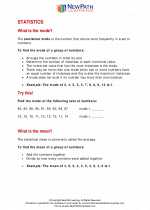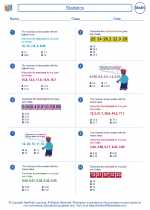Experimental Probability
Experimental probability is the probability obtained through a series of experiments or trials. It is based on the actual outcomes of an experiment or event, and is calculated by conducting the experiment and recording the results. This type of probability can be used to predict the likelihood of an event occurring based on real-world data.
Calculating Experimental Probability
To calculate the experimental probability of an event, you can use the following formula:
Experimental Probability (P) = Number of favorable outcomes / Total number of outcomes
For example, if you were to roll a fair six-sided die and record the outcomes, the experimental probability of rolling a 3 would be calculated by dividing the number of times a 3 is rolled by the total number of rolls.
Example Problem:
You roll a fair six-sided die 50 times and record the following outcomes:
- Number of times a 3 is rolled = 8
- Total number of rolls = 50
Using the formula for experimental probability:
P(rolling a 3) = 8 / 50 = 0.16
So, the experimental probability of rolling a 3 is 0.16, or 16%.
Study Guide
Here are some key points to remember when working with experimental probability:
- Experimental probability is based on actual data from experiments or trials.
- It can be used to predict the likelihood of an event occurring in real-world situations.
- To calculate experimental probability, use the formula: P = Number of favorable outcomes / Total number of outcomes
- Conducting multiple trials can lead to more accurate experimental probabilities.
It's important to gather sufficient data and conduct multiple trials to ensure the accuracy of experimental probability.
By understanding and applying the concept of experimental probability, you can make more informed predictions and decisions in various scenarios.
.◂Math Worksheets and Study Guides Fifth Grade. Statistics

 Worksheet/Answer key
Worksheet/Answer key
 Worksheet/Answer key
Worksheet/Answer key
 Worksheet/Answer key
Worksheet/Answer key
